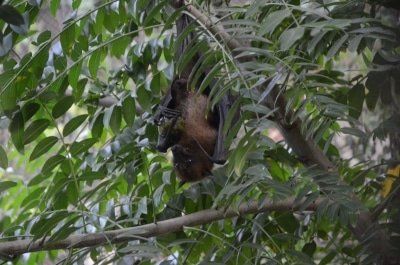New York, June 16 (IANS) Researchers are investigating how coronaviruses would affect cells upon entry into the bat host in the nasal passages, to explain why symptomatic disease does not occur.
While many similar studies of viruses in bats focus on the host’s immune system, this study centres on goblet cells, which produce mucus in the nasal passages.
Goblet cells are present in bat noses, and researchers hypothesize that there must be a difference in how coronaviruses attack these cells in bats versus humans.
“There is much to learn about the cells viruses attack upon entry,” said study lead investigator Liliana Davalos from the Stony Brook University in the US.
“Because of the acute respiratory symptoms and the curious loss of the sense of smell in some human patients with Covid-19 there is a hint that cells in the nasal passage are afflicted first,” Davalos added.
The researchers suspect that the receptors coronaviruses use to enter cells are distributed differently in the bats that have, for many generations, faced the challenge of circulating coronaviruses.
o test their hypothesis and compare the differences between bats and humans and to understand how the lining, or epithelium, is modified in bats compared to humans, the researchers will compare proteins, DNA and histology of bats to humans and mice.
The work will highlight the role of goblet cells, which have immune and inflammatory functions, as critical for infection from-versus resistance to viral attack.
They will use bat tissue samples from the Davalos lab, as well as published data sets from human and mice nasal tissues samples.
Findings from the research will also enable health agencies worldwide to better survey bat populations and potentially help to prevent further pandemics similar to Covid-19, the authors wrote.
–IANS
bu/na
